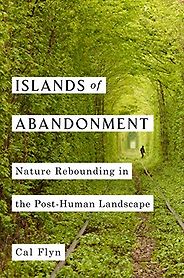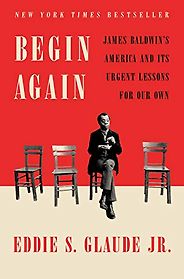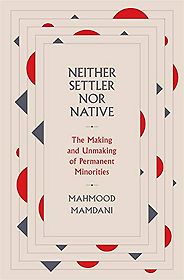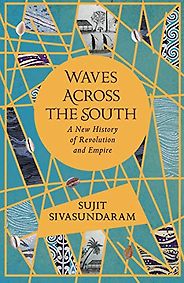When you’re choosing books for this prize, you’re presumably looking for nonfiction books that are global in scope. Could you tell me a bit more, particularly about the cultural understanding element?
We’re looking for books that help us understand where we are now, that help readers grasp what is going on in the world and how people, whatever their lineage and situation, are facing contemporary reality. We’re not at all against studies that dig deep into a problem or initiative as it’s manifested in a particular place or context, but the books that reach our shortlist tend to keep a wider perspective in mind. We like research, of course, but we understand that it doesn’t always have to be done in archives. We also like books that aren’t entirely confined to the internal arguments and, indeed, jargon of their specialism.
As for your question about culture, it may sometimes be clearer to talk about economic facts and institutional arrangements, but culture shapes how people make sense of all that. In a way, it is as vital as food to defining who we are and how we may in very different ways understand and face challenges and problems. We’re not seeing culture only in artistic terms here. We have nothing against literature, film or painting, but we’re interested more broadly in how people make sense of a world in which they may feel increasingly connected, albeit by abiding injustices as well as by things held in common more equitably.
And these are books that should be both readable and seriously researched?
Yes. The key for us is to balance those two priorities. Finding a topic that is significant is not so hard. The challenge for the judging panel is harmonizing the requirement for serious and ambitious research, with the other priority that the books must be capable of engaging an interested but non-specialist reader. The judges tend to spend more time agonizing about that than in defining exactly what we mean by ‘cultural understanding’!
Let’s look at the books that have made the cut in 2021. I’m going to go through them in the order they appear in the announcement on the British Academy website. First up is Islands of Abandonment: Life in the Post-Human Landscape by journalist and author Cal Flyn, who also happens to be our deputy editor.
This is a terrific book that comes from a young writer who reads and researches and does not work as an academic. Cal Flyn has found this urgent theme, and her treatment of it as she explores and ‘visits’ it around the world, is really arresting. We live in a damaged world that is not going to return to any sort of ‘pristine’ condition. It’s sometimes called the Anthropocene age, where human endeavor has entered nature and done possibly irreversible things to it. Flyn has decided to go to places where, for one reason or another, the landscape is no longer sustainable for human life and, as may be, for many other forms of life too. The book asks us to consider ‘What is the consequence of all this ruination? What is it likely to do to us as well as to nature?’ The result is an intriguingly twisted and adjusted form of nature writing, applied to sites of catastrophe, slow or sudden, where nature and a few strangely resilient people may be finding their way into a new kind of existence.
She goes to an intriguing collection of places, including the Exclusion Zone at Chernobyl, where she wanders about and looks and reads and researches what’s been going on since those dreadful events which presaged the end of the Soviet Union. It’s a familiar story, but Flyn is characteristically clever about it. She thinks about Tarkovsky’s film, Stalker (1979), which is about a “zone” that people have to enter, this alarming, dangerous, unpredictable place, which came to be associated with the Chernobyl Exclusion Zone via a computer game. She goes to some seriously toxic land at Verdun, still contaminated from the First World War, to Monserrat, where life has been fundamentally disrupted by volcanic explosion, to the city of Paterson on the Passaic, a super industrialized and heavily polluted river in New Jersey, which eventually oozes out into a coastal strait flowing out near New York City. She finds another example closer to home (which, for Flyn, is the Orkneys) on a little island called Swona, which has been abandoned by people and where the cattle have been ‘rewilding’ for long enough to have become rare objects of study.
Chernobyl has a clear, exotic appeal, but I find it so interesting that it’s also examples from New Jersey and Detroit and places that are closer to home, as it were.
Detroit is the perfect city for this – and, incidentally, a place where ‘white flight’ intensified the slide into dereliction, reminding us that this is not just a story about industrial pollution and global warning.
What do you walk away from the book with, in terms of global cultural understanding? Is there a conclusion?
We’ve got books on the shortlist that follow a more academic approach, outlining an argument and drawing it to a considered conclusion. That’s not really how Flyn chooses to work. There is lots about the book that shows she has been reading and thinking about her theme conceptually, and not just observing it superficially. She tends to present us with considered situations and images rather than abstractly formulated conclusions. She closes by heading out into the desert from Palm Springs in Southern California. She passes an increasingly dried up inland sea at a place called Salton. Caused by a man-made breach in the Colorado river in 1905, the floodwaters settled sufficiently to turn the town into a popular resort, the ‘Salton Riviera.’ A century later, all that is left is a hyper-salted and algae-clogged dead sea in a stinking and poisoned dustbowl. Heading east, she finds another eerily dismal place in an area where a lot of nuclear testing and military training were done. Many of her closing images come from a long-closed Marine base called Camp Dunlop, now known as Slab City thanks to the outcasts—hippies, drifters and ‘meth heads’—who’ve chosen to move in. You get this more than a little dystopian picture of a new kind of life improvised in a depleted place where even the cactuses might as well be glowing. It’s an image of the world in serious trouble, but it comes with this unexpected sense of ‘raw splendour’ too.
Flyn shows a world full of danger and alarm and threat: you never feel at ease in any of these places, and it is clear that great damage has been done to people as well as the flora and fauna. However, the book is not just another depressing ‘end of the world’ narrative. Flyn finds various forms of natural recolonization and adjustment, many of them very surprising, which give you an indication that, once humans are no longer just churning along in their accustomed ways, other possibilities do emerge in unexpected places. So the book’s sense of disaster comes with a strong sense of possibility and resilience too.
Let’s go on to the next book. This is Begin Again: James Baldwin’s America and its Urgent Lessons for Today by Eddie Glaude, who is a professor of African American studies at Princeton University. This seems like a brilliant introduction to the life and work of the writer James Baldwin.
This title is written by a man who has been reading James Baldwin—both as a professor and as a African American who wants to understand the world he’s in—for most of his adult life. He has taken not the fiction of Baldwin, but the nonfiction, starting with The Fire Next Time (published in 1963) and going on through the seventies and right up until his death in 1987.
It’s at once a tribute and a recuperation of Baldwin as a political thinker who lived through years of oppression and then many more of failure and powerlessness after the Reconstruction demanded by the Civil Rights Movement was resisted and defeated, with the help of murders, assassinations and mistrials. He finds one of the most depressing consequences of this defeat in the fact that, since the sixties, the African American population has been disproportionally funneled into the penal system. If you look at the racial composition of America’s prison population: well, the facts are glaring, and the situation has been likened to a continuation of slavery by other means.
Glaude may not repeat that claim exactly, but he does find what Baldwin was living through after the defeat of the Civil Rights Movement directly comparable to what America was experiencing under Trump. The promised Reconstruction wasn’t going to happen on Reagan’s watch, and now the resistance to change was once again personified by the man in the White House. So what you have here is a lucidly argued book of witness, testimony and political critique. Glaude allows Baldwin to fail, to get things wrong, and to change his mind. The Baldwin he describes is struggling with defeat and the personal consequences of his own history—he drinks too much, he is angry, he is capable of saying intemperate things. He gets into rows that almost certainly help no one. It’s not easy to be the surviving spokesman of a movement that has been destroyed.
“We’re looking for books that help us understand where we are now”
Glaude seems to me exemplary in his engagement with Baldwin, here treated as a great American writer who should be counted alongside Emerson, Whitman and others, and whose arguments still have a close and illuminating bearing on the present. One of the things Glaude learns from Baldwin is that you sometimes have to be prepared to check your impatience. Baldwin talked about how you can sometimes only manage to buy time, and Glaude counts that insight against himself. In the approach to the election Trump won, he was advising people not to vote for Hilary Clinton, because her Democratic Party was so poor in terms of its engagement with the politics of race. Another point of understanding he raises from Baldwin’s example is that superficial identity politics really isn’t enough. The cry of ‘Me, me, me’ can actually be a problem, because there are no solutions without a wider vision capable of picking up more of the world than that. Glaude finds a contrary starting point in Baldwin, writing in 1963: “You must understand that your pain is trivial except insofar as you can use it to connect with other people’s pain.”
Let’s move on to the next book: Neither Settler nor Native: The Making and Unmaking of Permanent Minorities by Mahmood Mamdani. So this opens with the bold claim that the origins of the nation-state don’t lie in 1648 and the Treaty of Westphalia, but in 1492, when Columbus started off the European takeover of the Americas and the Jews were expelled from Spain.
Neither Settler nor Native emerges from many years of research and reflection about one of the outstanding questions of our time. Mamdani starts by asking, ‘Why is it that after the coming of post-colonial governments, there’s been so much terrible murder and bloodshed in these new independent nation states? Why is it that many new post-colonial nations have no sooner established themselves than they start seeking outsiders within their borders and excluding them from authentic membership of their communities? These are the opening questions, and Mamdani, who has watched them in the Middle East as well as diverse African countries, knows about the discrimination, ethnic cleansing and mass slaughter to which they keep leading. He goes back to 1492 because he sees these more recent horrors as the outcome of a much longer history.
He writes very cogently about the early settlers in America, originally the British, French and other Europeans. He’s keen to establish the term ‘settler’ as distinct from migrant or an immigrant: a settler goes to conquer and build a nation on his own terms. Mamdani notes that writers interested in the black American experience sometimes tend to overlook what happened to the North American Indians. They have, he suggests, mistakenly “subsumed colonization under the umbrella of racism”. So he looks at the way the American Republic treated the Indians: a lot of killing, with the survivors turned into second class beings, and ‘Indian country’ further reduced to static reservations. He sees this as one of the most important early examples of the violent exclusion that is built into the formation of the nation-state in a colonial context.
Get the weekly Five Books newsletter
Mamdani sees the consequences of that process worked out in Nazi Germany, whose genocidal policies were, in Hitler’s mind at least, informed and sanctioned by the earlier American treatment of the Indians. He is highly critical of the Nuremberg trials, and the denazification of Germany, which he says completely failed to engage the issue properly, concentrating instead on convicting and punishing a few ‘bad apples’. He also shows how, immediately after the war and the Yalta and Potsdam conferences, the Allies themselves presided over another huge ethnic cleansing operation in Eastern Europe, moving millions of people in a crude and for many fatal attempt to align the population with revised state borders. There were many deaths once again.
His other case studies are Israel where the Palestinians are the ‘permanent minority’ within the Zionist nation-state, and the recently divided Sudan, where the legacies of British imperialism are also being worked out in highly problematic ways.
And the answer to this ongoing history? Mamdani really feels the weight of that question. He finds some reasons for optimism in post-apartheid South Africa, where a genuinely political solution and a fundamentally revised state have been struggling to come into existence. He writes of how the polarized peoples of the apartheid state found a way of talking about the past that isn’t just about accusation or individual guilt. He gives new meaning to the term ‘survivor’, suggesting that people on both sides of that suspended history are ‘survivors’, who are still working to find a new future and a new political order in shared recognition of that fact. He’s still very critical about some aspects of the situation: he doesn’t like the Truth and Reconciliation Commission, suggesting that they didn’t actually do a lot more than give money to the victims of warring anti-apartheid factions. He is, however, very respectful of the process overall and suggests, persuasively, that much can be learned from this attempt to achieve a new political settlement.
Do you agree with him?
A lot of the time, yes, and even when I wonder I remind myself that he knows a lot more about his subject than I do. I think a great deal of credit is due to a writer who has tried to think all this through. Mamdani knows the risk of being too ‘schematic’ and it’s great to read such a brilliantly informed researcher who has looked at these diverse situations so closely and then tried to produce a conceptual framework that will help us all think about it. He is careful with words as well as contexts; he’s trying to offer us a vocabulary that will enable us to think more accurately about these situations, and that could surely be extraordinarily useful. I think it’s safe to assume that some people will disagree with aspects of his interpretation but that is part of how understanding gets built: the book certainly isn’t written by a partisan who is trying to prove himself right all along. So, yes, I respect it a great deal, and I have learned a lot from it too. It is, I think, a truly important book.
Let’s turn to the last book on this year’s shortlist, which is Waves Across the South: A New History of Revolution and Empire. This is by Sri Lankan-born Cambridge historian, Sujit Sivasundaram.
This book urges readers to take a new look at a period which has been well covered by historians from a European perspective. Generally known as the Age of Revolutions, it comes out of the late 18th century with the American Revolution, followed by the French Revolution, followed by the Haitian Revolution, and then moves into the early 19th, by which time the resurgence of counter-revolutionary tendencies in Britain and other centres of power may remind us that the Age of Revolutions took place in the high age of empire as well.
Sujit Sivasundaram starts out by observing that most histories of this period tend to overlook the experience of a quarter of the world: the Indian oceans and the Pacific. It’s a story of water at least as much as land, and of a characteristically maritime version of imperialism, which is heavily shaped not just by tides, waves and monsoons, but by the fact that reliance on ships gave a basic instability to the imperial process, and also, as we see repeatedly in these pages, a dependence on more or less indigenous knowledge, methods and ingenuity.
Sivasundaram traces many quite close-grained encounters happening in Australia, in the Bay of Bengal, in Cape Town or in Mauritius. Settlement may have been forceful and systematic in places but it is also about pirates and escaped convicts, people on the run who find themselves on a particular beach and improvise often brutal worlds for themselves. The colonial surveyors were inclined to treat all these territories, all these little islands they came to, as if they were totally separate worlds. They were doing early scientific observation. They were almost like anthropologists studying everything. As Sivasundaram shows, they had no idea that these islands had been interconnected and in communication for centuries before they got there. Repeatedly, you get this sense of the colonizers laying down their grids and the sand beneath just shifting or melting away in this constant return to liquidity and movement. That’s the sort of feeling you get from this illuminating book.
Five Books interviews are expensive to produce. If you're enjoying this interview, please support us by donating a small amount.
For a reader, one of the virtues of this approach is to be found in the many vividly populated stories Sivasundaram has managed to bring to life through objects as well as more conventional archives. Some may already be well-known but others struck me as both arresting and novel. I think of the case of the building of the Horsburgh Lighthouse, which went into action in 1851, and still stands on its low and solitary rock offshore from Singapore and serves to guide ships heading towards the South China Sea. Carried out under a young Scottish surveyor called J.T. Thompson, this all but impossible project was carried out by a workforce of people who spoke eleven different languages – all at the mercy of the wildest winds, waves and mosquitoes. The project was an astonishing combination, as Sivasundaram notes, of European surveying and the Asian body, and it brought everyone involved face-to-face with the extremity of their situation.
What you end up with, as you read on, is a greatly increased understanding of the continued power, knowledge and agency of the people who end up underneath the colonization process, and sometimes also of the indebtedness and even friendship that developed between the two worlds. That’s part of the creativity of the book, to find the evidence of this response and to amplify it in the reader’s mind. That too is about global cultural understanding.
Does looking at this part of the world change the course of history, or did it have a significant impact on the way the Empire was run?
I am not sure that it changes the overall outline of the Age of Revolutions, or that it fundamentally shifts the centre of colonial power, but it certainly adds greatly to our picture of things. It’s a story of interrelatedness, which is not invariably a matter of rape and violence, although that was certainly a significant part of it. Those stories are in there, but there is also a lot of skillfulness, respect and curiosity, and a genuine exchange of ideas too.
I like the way Sivasundaram says the illustrations are really important, and then you do have all these pictures of boats.
That’s right and of different types of waves, and of the ‘indigenous’ people’s skills at riding and even mastering them. Like last year’s shortlist, this book and Mamdani’s are on legacies of empire and part of our rethinking of that history. Sivasundaram isn’t looking to make it sound like a party at all, but he does insist on doing everything he can to reintroduce a sense of intelligence and creativity – ‘agency’ again – to the other side of the encounter. In that, the book is definitely very successful.
This year’s winner will be announced on October 26th 2021.
In addition to Patrick Wright, the judges of the British Academy Book Prize are:
* Madawi Al-Rasheed FBA, writer, academic and Visiting Professor at the Middle East Centre at the London School of Economics
* Catherine Hall FBA, Professor Emerita of Modern British Social and Cultural History at University College London
* Fatima Manji, Channel 4 News broadcaster and journalist
* Philippe Sands QC FRSL, Lawyer, academic and writer, University College London and Matrix Chamber
Interview by Sophie Roell, Editor
October 4, 2021. Updated: January 7, 2023
Five Books aims to keep its book recommendations and interviews up to date. If you are the interviewee and would like to update your choice of books (or even just what you say about them) please email us at [email protected]










